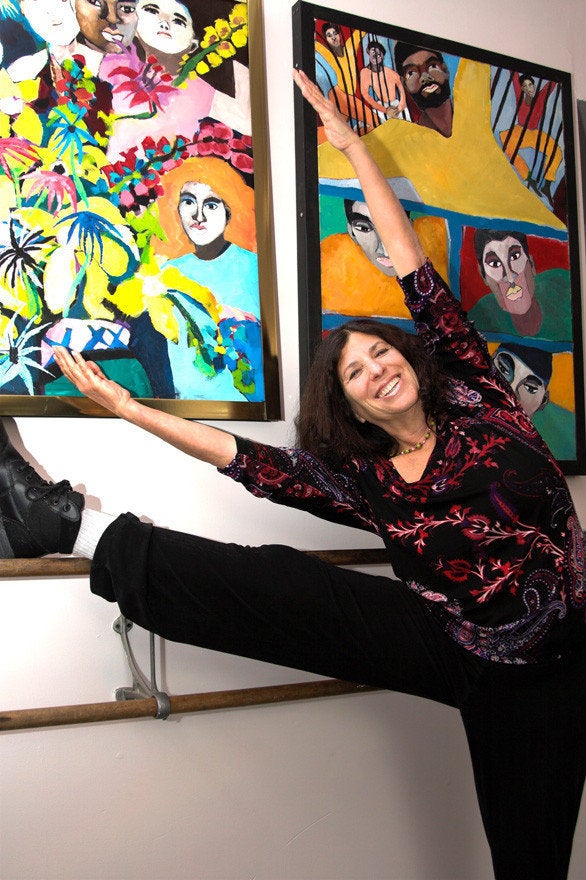
This post is part of our month-long series featuring Greatest Women of the Day, in recognition of Women's History Month.
To nominate a Greatest Woman of the Day, e-mail Impact@huffingtonpost.com.
Every weekend Susan Slotnick carries her boombox through the doors of Woodbourne Correctional Facility in upstate New York and teaches male prisoners to dance. Under the Rehabilitation for the Arts umbrella, she's been volunteering her time here every weekend for the past five years.
"Part of the reason it works so well with men is that they need to express emotion through their bodies rather than through their words," Susan said.
Susan has worked as a teacher since graduating SUNY New Paltz with a degree in arts education in the early 1970s. She began working with touring dance groups and teaching dance classes to children in her neighborhood. This work inspired her to ask where else dance instruction would be most appreciated. In a country with the highest rate of incarceration by hundreds of thousands, prisons immediately came to mind. "It occurred to me that people who could not change their living conditions would benefit emotionally and physically from dancing."
Susan had a lot of success working with male students in the past, so she began cold-calling male correctional facilites in her area, asking if she could come and teach classes. As a woman, this was especially hard. "Obviously, they thought my idea was laughable," she said.
But soon a juvenile correctional facility in Highland, N.Y. allowed her to give it a try. For five years she volunteered at the facility, training them in modern dance and mounting live performances. "Their parents would come and afterwards they'd tell me it was the proudest experience of their lives."
After a administration change at the juvenile facility cut the funding for the program, Susan tried desperately to bring her classes elsewhere. It was then that she was connected with Katherine Vockins, the director of Rehabilitation for the Arts. Vochkins was skeptical, but Slotnick begged her for help getting another class off the ground.
Within the first five minutes of her first class at Woodbourne, Slotnick could tell that she was in this for the long haul. "Many of the men I work with come from countries where dance is a a major part of their culture," Slotnick says. "Dance is in their bodies. Their crimes do not define them."
Through dance these men are able to express themselves in miraculous ways. "It takes a while for them to trust that you're going to stick with them for the duration, but once they know you'll keep coming back each week, a tremendous amount of understanding starts to flow back and forth between us."
The men she works with at Woodbourne come from a variety of backgrounds and have been incarcerated for everything from theft to murder, but attendance at Susan's dance classes has been high from the beginning. "I did this beautiful piece where the prisoners reenacted their street crimes in slow motion," she explains. "If they aren't free, at least they should be able to feel free."
Andre Noel, one of Susan's students, will be released this weekend after serving a 10-year sentence. He has decided that his life's mission is to return to the Caribbean country where he was born and teach dance to at-risk children.
Susan says the program has been the highlight of her career. And since many of the prisoners have said that dropping out of high school was the "deepest regret of their lives," she has recently been on a mission to educate high school students about the joys and power of dance.
"I was a sad and alienated child who consistently failed in school, so in order to cope with my childhood I would dance. I would dance for hours until I felt better. I want to share that joy."
As she travels around the country, she'll bring with her a documentary film that has been made about her work, "A Reflection of Our Lives Through Dance." The film features many of the prisoners' stories and clips from the prisoners' performances.
Best of all: it was edited by one of her former students.
Watch a video interview with Andre Noel, one of Slotnick's students at Woodbourne: